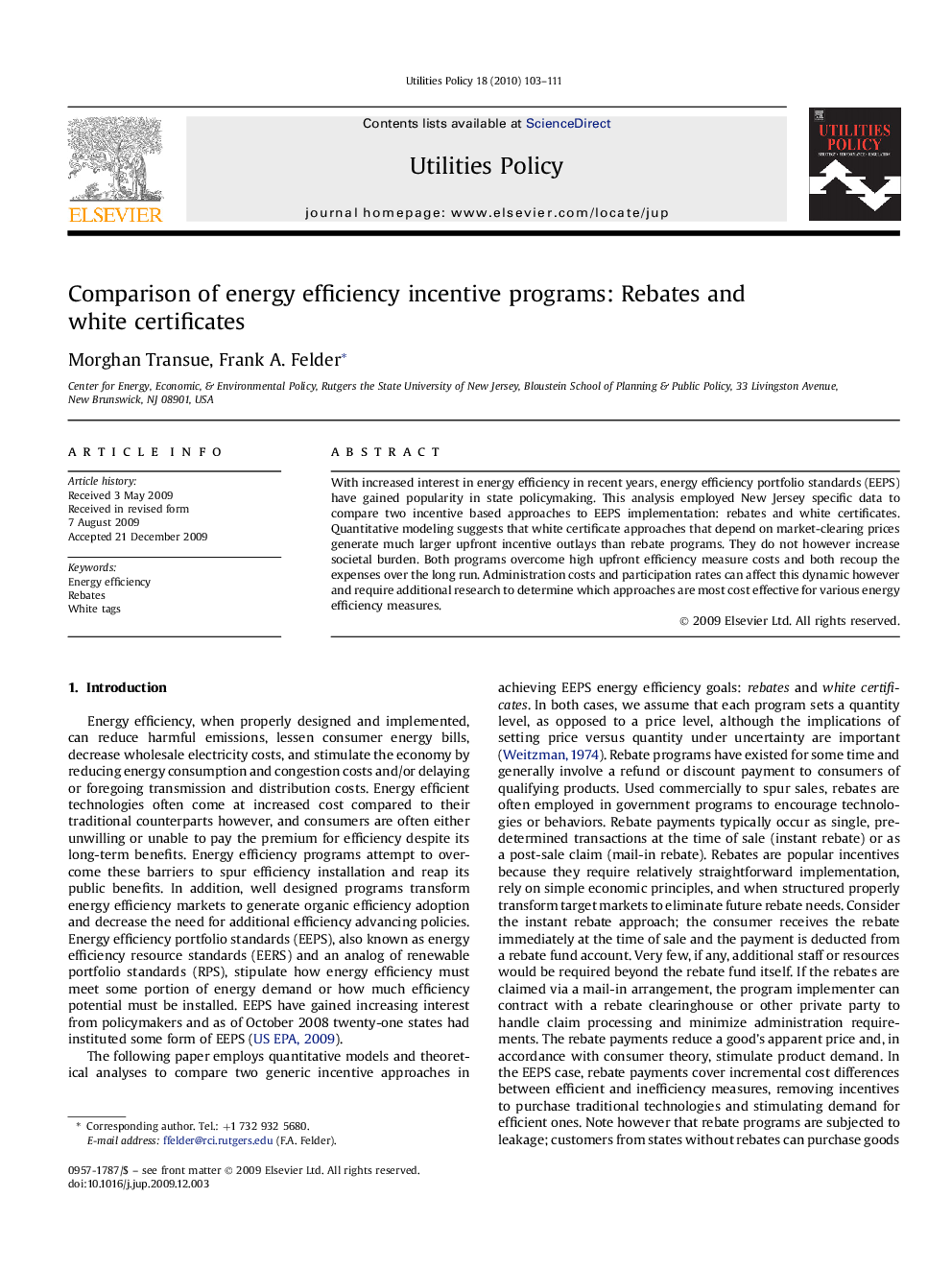| Article ID | Journal | Published Year | Pages | File Type |
|---|---|---|---|---|
| 999223 | Utilities Policy | 2010 | 9 Pages |
With increased interest in energy efficiency in recent years, energy efficiency portfolio standards (EEPS) have gained popularity in state policymaking. This analysis employed New Jersey specific data to compare two incentive based approaches to EEPS implementation: rebates and white certificates. Quantitative modeling suggests that white certificate approaches that depend on market-clearing prices generate much larger upfront incentive outlays than rebate programs. They do not however increase societal burden. Both programs overcome high upfront efficiency measure costs and both recoup the expenses over the long run. Administration costs and participation rates can affect this dynamic however and require additional research to determine which approaches are most cost effective for various energy efficiency measures.
